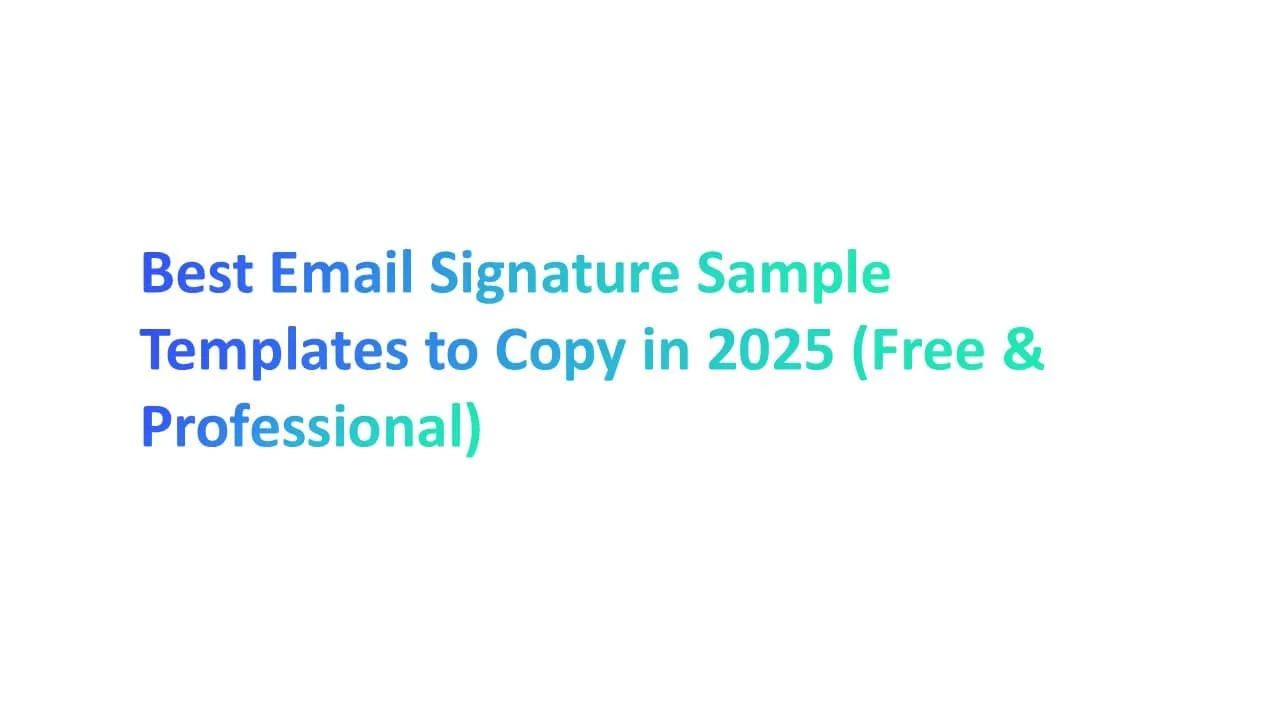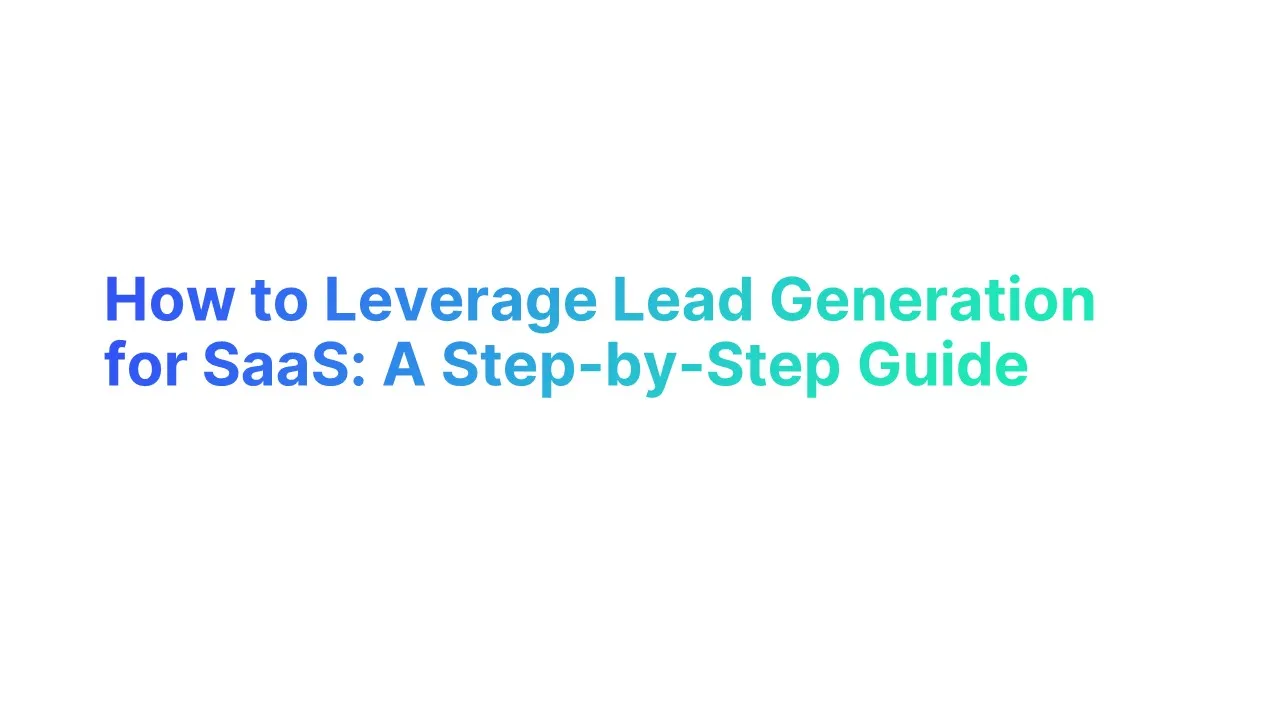Are you struggling to reach new customers and grow your business? If so, cold email marketing could be the solution you're looking for. In this article, we'll explain what cold email marketing is, how to craft the perfect cold email, how to build an effective cold email campaign, and best practices for success. Plus, we'll share some real-life success stories to inspire you. Let's get started!
Understanding Cold Email Marketing
What is Cold Email Marketing?
Cold email marketing is the process of sending unsolicited emails to individuals or businesses with whom you have no prior relationship. The goal of cold email marketing is to generate leads, build relationships with potential customers, and drive sales.
However, it is important to note that cold email marketing should be done ethically and legally. This means that you should only send emails to individuals who have given you permission to contact them or who have not opted out of receiving communications from you.
Benefits of Cold Email Marketing
One of the key benefits of cold email marketing is the ability to reach a large number of potential customers quickly and inexpensively. Unlike traditional marketing methods, which can be costly and time-consuming, cold email marketing allows businesses to connect with leads efficiently.
Additionally, cold email marketing can help businesses increase their brand awareness and credibility. By providing valuable information and resources to potential customers, businesses can establish themselves as thought leaders in their industry and build trust with their target audience.
Another benefit of cold email marketing is the ability to track and measure the success of your campaigns. With email marketing software, businesses can track open rates, click-through rates, and conversions, allowing them to make data-driven decisions and optimize their campaigns for better results.
Cold Email Marketing vs. Traditional Email Marketing
Traditional email marketing involves sending emails to individuals who have opted in to receive communications from your business. Cold email marketing, on the other hand, involves sending emails to individuals with whom you have no prior relationship.
While both forms of email marketing can be effective, cold email marketing requires a different approach. To be successful with cold email marketing, you need to craft emails that are engaging, personalized, and relevant to your target audience.
This means taking the time to research your target audience and understand their pain points, needs, and interests. By tailoring your messaging to address these factors, you can increase the likelihood that your emails will be opened, read, and acted upon.
Additionally, cold email marketing often involves a longer sales cycle than traditional email marketing. This is because you are reaching out to individuals who may not be familiar with your brand or product, and it may take several touchpoints before they are ready to make a purchase.
However, with the right approach and persistence, cold email marketing can be a powerful tool for generating leads and driving sales for your business.
Crafting the Perfect Cold Email
Cold emailing can be a powerful tool for reaching out to potential customers and generating new business. However, crafting the perfect cold email requires a combination of strategy, creativity, and attention to detail. In this guide, we'll explore the key elements of a successful cold email, from targeting the right audience to including a strong call-to-action.
Targeting the Right Audience
One of the most important steps in crafting a successful cold email is identifying and targeting the right audience. Before you start drafting your email, take some time to think about who your ideal customers are and where you can find them. Are they in a specific industry or geographic location? Do they have certain job titles or interests?
Once you have a clear understanding of your target audience, you can begin to create a list of prospects to reach out to. This can include individuals or businesses that fit your ideal customer profile, as well as any existing leads or contacts you may have.
Writing an Engaging Subject Line
The subject line of your email is the first thing your recipient will see, so it's important to make it count. A great subject line can entice your recipient to open your email and learn more, while a boring or generic subject line can cause your email to be ignored or deleted.
To write an engaging subject line, try to keep it short, catchy, and relevant to your recipient. Use language that speaks to their pain points or needs, and consider personalizing the subject line with their name or business name.
Personalizing Your Cold Emails
Personalization is key when it comes to cold email marketing. By addressing your recipient by name and referencing their business or industry, you can create a sense of connection and relevance. Personalization can also help your email stand out in a crowded inbox.
In addition to personalizing the subject line, consider including personalized details throughout the body of your email. This could include referencing a recent article they wrote or a project they completed, or highlighting how your product or service can specifically benefit their business.
Keeping Your Message Clear and Concise
Your cold email should be clear, concise, and to the point. Avoid long paragraphs and use bullet points or numbered lists to break up your message. Make sure your email addresses the recipient's pain points or needs, and explain how your product or service can help.
Remember, your recipient is likely receiving dozens or even hundreds of emails per day, so it's important to make your message as easy to read and digest as possible. Keep your language simple and straightforward, and avoid using industry jargon or technical terms unless necessary.
Including a Strong Call-to-Action
The ultimate goal of your cold email is to generate a response from your recipient, whether that's a phone call, a meeting, or a purchase. To achieve this, your email should include a strong call-to-action.
Make it clear what next steps you want your recipient to take, and provide easy-to-follow instructions. This could include scheduling a call or meeting, signing up for a free trial, or visiting your website to learn more about your product or service.
By following these key elements of a successful cold email, you can increase your chances of generating new business and building valuable relationships with potential customers.
Building an Effective Cold Email Campaign
Creating a High-Quality Email List
The success of your cold email campaign depends on the quality of your email list. Make sure you're targeting the right audience and that your list is up-to-date and accurate.
Segmenting Your Email List
Segmenting your email list can help you tailor your messaging and increase the relevance of your emails. Divide your list into smaller groups based on demographics, interests, or behaviors.
A/B Testing Your Cold Emails
A/B testing involves creating two different versions of an email and testing them to see which performs better. You can test different subject lines, messaging, and calls-to-action to optimize your cold email campaign.
Scheduling and Sending Your Emails
It's important to carefully time and schedule your cold emails to maximize their impact. Consider the time of day, day of the week, and any relevant holidays or events that could affect your recipient's response.
Tracking and Analyzing Your Campaign Results
Tracking and analyzing your campaign results is essential for measuring the success of your cold email campaign. Tools like Google Analytics can help you track opens, click-throughs, and conversions to see what's working and what's not.
Cold Email Marketing Best Practices
Cold email marketing can be an effective way to reach out to potential customers and generate leads. However, it's important to follow best practices to ensure that your emails are well-received and don't end up in the spam folder.
Complying with Anti-Spam Laws
Before launching a cold email campaign, it's crucial to make sure you're aware of and compliant with anti-spam laws in your country or region. These laws are designed to protect consumers from unwanted and unsolicited emails. Familiarize yourself with regulations like CAN-SPAM in the United States and GDPR in Europe. Make sure you have explicit permission from your recipients to send them emails, and include an easy way for them to unsubscribe from future emails.
Maintaining a Professional Tone
While personalization is important in cold email marketing, it's equally important to maintain a professional tone. Your emails should be well-written and free of errors. Use proper grammar and spelling, avoid slang or jargon, and keep your messaging respectful and appropriate. Remember, your goal is to establish a relationship with your recipients, not turn them off with unprofessionalism.
Following Up on Your Cold Emails
A successful cold email campaign often involves following up with your recipients. Don't be afraid to reach out a second or even third time to reiterate your message and provide additional information. However, be mindful not to come across as pushy or aggressive. Instead, use a friendly and helpful tone to show that you value their time and are genuinely interested in their needs.
It's also important to track your email open and response rates to see how effective your follow-up emails are. You can use this data to fine-tune your approach and improve your chances of success.
Continuously Improving Your Cold Email Strategy
Cold email marketing is an ongoing process that requires continuous improvement. Continuously test new subject lines, messaging, and tactics to see what works best for your audience. Use A/B testing to compare different versions of your emails and see which ones generate the most engagement.
Another effective strategy is to segment your email list based on factors like demographics, interests, and behaviors. This allows you to tailor your messaging to specific groups and increase the relevance of your emails.
Remember, cold email marketing is all about building relationships and providing value to your recipients. By following best practices and continuously improving your approach, you can generate more leads, increase conversions, and grow your business.
Cold Email Marketing Success Stories
Cold email marketing can be an effective way to generate leads and boost sales for businesses. In this article, we'll take a closer look at three case studies of companies that achieved success through targeted cold email campaigns.
Case Study 1: How Company X Boosted Sales with Cold Email Marketing
Company X, a B2B software company, was struggling to generate leads and boost sales. They decided to try a targeted cold email campaign to reach potential customers. First, they identified their ideal customer profile and created a list of contacts that fit that profile. Then, they crafted a highly personalized email that addressed the pain points of their target audience. The email included specific examples of how Company X's software had helped similar businesses solve similar problems.
The results were impressive. Company X achieved a 50% response rate from their cold email campaign. They were able to schedule meetings with potential customers and ultimately increase their sales by 25%. The personalized approach of the email campaign helped Company X stand out from competitors and build trust with potential customers.
Case Study 2: How Company Y Increased Webinar Attendance through Cold Emails
Company Y, a marketing agency, was hosting a series of webinars to educate potential customers about their services. They wanted to increase attendance at these webinars and generate new leads for their business. They decided to try a cold email campaign to promote the webinars.
Company Y created a list of contacts in their industry and crafted a message that highlighted the benefits of attending the webinar. The email included specific details about the topics that would be covered and how attendees could benefit from the information. They also included a clear call-to-action to register for the webinar.
The results were impressive. Company Y achieved a 65% attendance rate for their webinars, which was much higher than their previous attendance rates. They were able to generate new leads for their business and build relationships with potential customers.
Case Study 3: How Company Z Generated Leads with a Targeted Cold Email Campaign
Company Z, a healthcare technology company, wanted to generate leads and build relationships with potential customers. They decided to try a targeted cold email campaign to reach their target audience. First, they segmented their email list based on factors like job title and industry. Then, they crafted a message that addressed the specific pain points of each segment.
The results were impressive. Company Z achieved a 30% open rate for their cold email campaign. They were able to generate new business opportunities and build relationships with potential customers. The personalized approach of the email campaign helped Company Z stand out from competitors and build trust with potential customers.
In conclusion, these case studies demonstrate the power of targeted cold email campaigns. By identifying your ideal customer profile, crafting a highly personalized message, and including a clear call-to-action, businesses can achieve impressive results through cold email marketing.
Conclusion
If you're looking to drive business growth and reach new customers, cold email marketing can be a highly effective strategy. By targeting the right audience, crafting engaging messaging, and building an effective campaign, you can generate leads and increase your revenue. Remember to follow best practices for success, and continuously test and improve your strategy. With the right approach, cold email marketing can be a powerful tool for growing your business.








